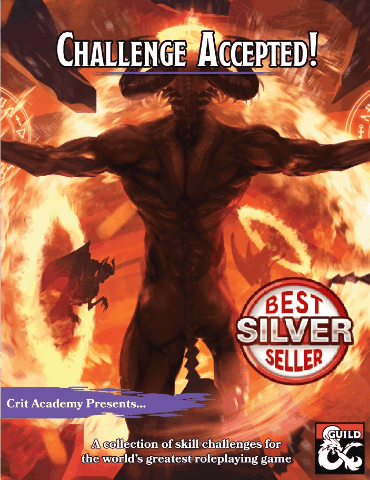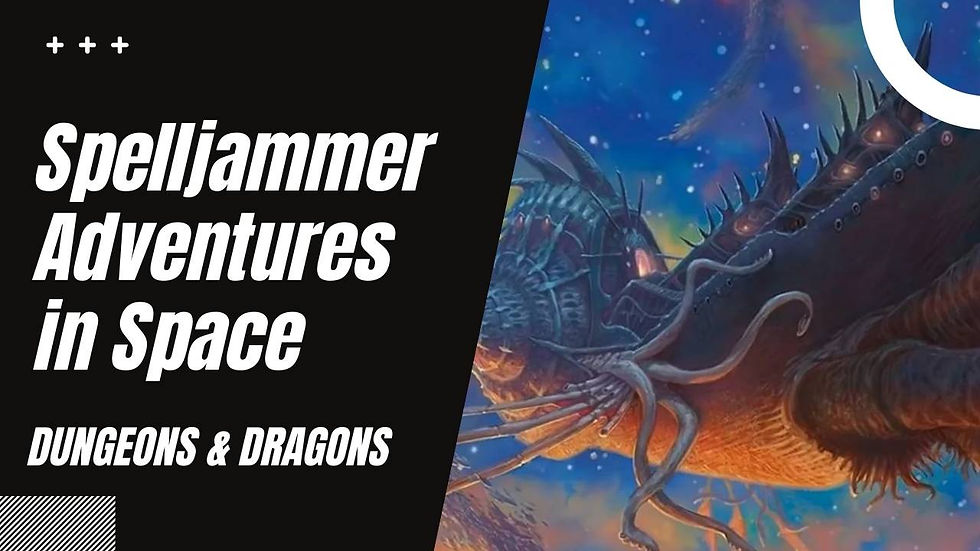Other RPG Mechanics to Enhance your Dungeons and Dragons Game
- Justin Handlin

- Dec 31, 2020
- 4 min read

There are many other RPG games besides D&D. Many have some really great mechanics. While some of those mechanics are very complex and require an entire rule system, there are a few that are fantastic and can be dropped right into your D&D game to enhance the experience. We read an article from Geek and Sundry a while back with 2 or three examples, we decided to keep digging even deeper to see what other diamonds in the rough we could find. This is our list of RPG Mechanics that are amazing and can easily be dropped into D&D to enhance your gaming experience.
13th Age:
ONE UNIQUE THING
Each character should have one unique feature you invent for him or her when you create the character. Your one unique thing is an unusual trait that sets your character apart from every other hero. The moment when all the players sit down together with the GM to create their characters’ one unique thing is often the moment when a campaign comes to life.
The intent is to hint at a unique story that you and the GM will take advantage of and learn more about in the course of the campaign. Good one unique things (“uniques”) frequently provide clues to how your character engages with the people, places, and things of the game world.
Examples:
“I am the only halfling knight of the Dragon Emperor.”
In most 13th Age campaigns, there could be multiple warlike halflings serving the Emperor, but not in this campaign, because Sir Gilly Tallfather wanted to be the only halfling knight in the world. Gilly’s choice seemed likely to push the rest of the halflings firmly toward their hairy-footed pacifist origins, but it might also be possible that the Emperor saw something in Gilly that Gilly isn’t aware of yet. Being a Knight of the Empire could turn out to
be a lot more significant than Gilly realizes. . . .
“I have a clockwork heart made by the dwarves.”
Another Convention Halfing. We had no idea why this was true. In a real campaign, we’d find out, and the consequences would be interesting for everyone. In the convention game, the clockwork heart came in handy when a monster that should have killed the character fumbled with a natural 1; clearly, the enemy’s sword thrust encountered a powerful clockwork heart instead of halfling flesh-and-blood.
Fate Core:
Success at a Cost:
Instead of just two conditions on die rolls in DND. Fate has four.
FAIL:
This means one of several things: you don’t get what you want, you get what you want at a serious cost, or you suffer some negative mechanical consequence. Sometimes, it means more than one of those.
It’s the GM’s job to determine an appropriate cost.
TIE:
This means you get what you want, but at a minor cost, or you get a lesser version of what you wanted.
SUCCEED:
This means you get what you want at no cost.
SUCCEED WITH STYLE
Defeating your oppositions roll(or target DC) by a significant amount
This means that you get what you want, but you also get an added benefit on top of that.
Feng Shui:
The Map is Not Your Friend!
What in other games delivers a core part of the play experience here diverts and constrains your imagination. A map centers your visualization on a piece of paper or tablet screen when it should all be unfolding in your mind’s eye.
A general verbal description allows everyone, yourself included, to invent new details on the fly. A map subliminally encourages players to only envision what they see marked down, even if you tell them they’re free to add new stuff.
When players ask if a certain feature exists in a fight location, your default answer should be “yes.” In Feng Shui 2, you want to be able to decide on the spur of the moment that there just happen to be awnings hanging over that walkway between
buildings or there is indeed a ledge big enough for that hoodlum to jump off of.
If a detail seems too odd or out of place, instead say, “Sell me on it.” Much of the time the player who knows the suggestion is a stretch will drop it in favor of something that doesn’t require them to convince you.
A flat “no” may be acceptable for suggestions that make the bad guys seem like idiots, or seem too conveniently lucky for the players, even if they could conceivably match the fight location.
Marvel Heroics
Elective Action Order
Combat would start by rolling initiative as normal. The highest roller would go first.
After taking their action, that player passes their turn to another character, either enemy or ally, who hasn't yet acted that round.
The character who goes last decides who goes first next combat.
The trick with an action order system like this is in the teamwork. How do you put together “initiative” such that it supports teamwork looking and feeling and working like teamwork?
With Marvel, one key example was the Fastball Special. Colossus doesn’t necessarily strike me as the “oh yeah, he’s totally going to go first” guy in a bog-standard initiative system, but you really want him to be going before Wolverine if they’re going to do the Fastball. Colossus sets up the assist, improving Wolverine’s subsequent attack.
The GM can choose to interrupt the flow of combat with their enemy, at a cost.
7th Sea
“I Fail”
Before any roll, a player can announce, “I fail.” This means the Hero fails to overcome the Risk(skill check), he suffers all the consequences and misses all the opportunities. He never rolls dice. The player then describes how his Hero fails. Gaining 1 Hero Point(inspiration) for failing, then narrating the outcome, adds tension and drama to an Action Sequence. Try it out
While this list is of our top choices, there are so many great RPGs with fantastic mechanics that can be easily slid into other RPGs helping fill a gap that may be left by the system you're using.















Comments